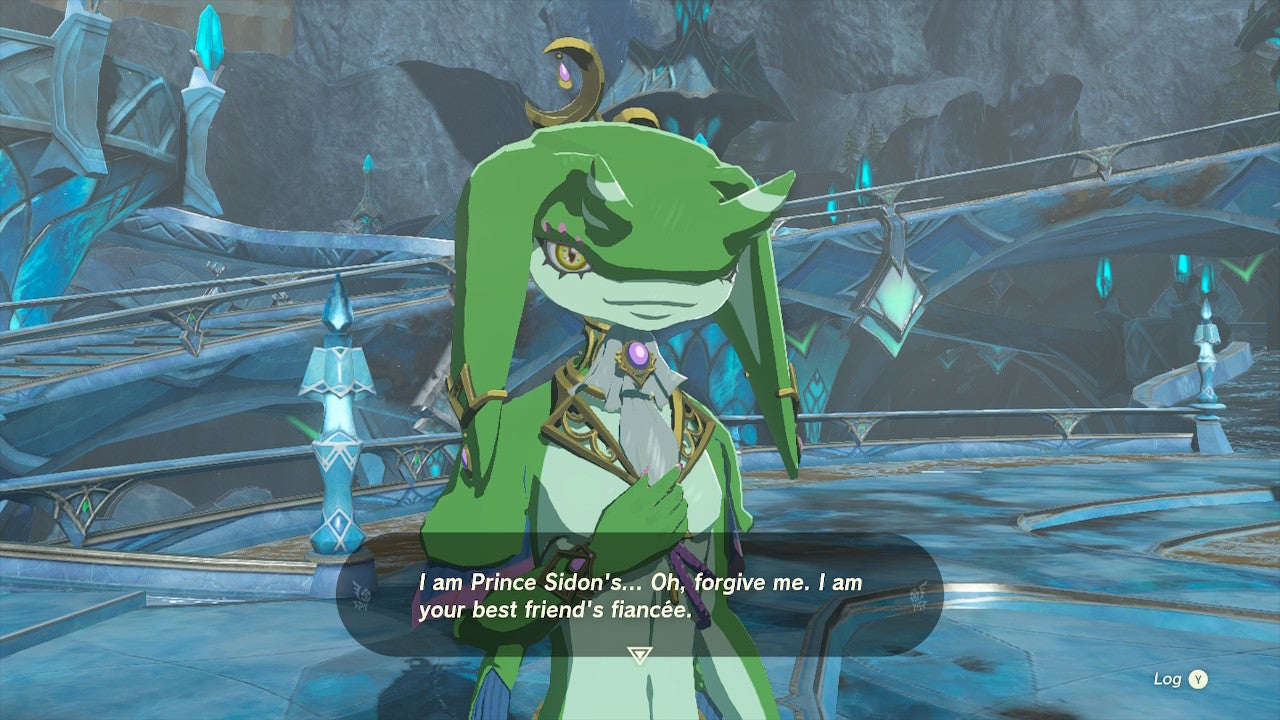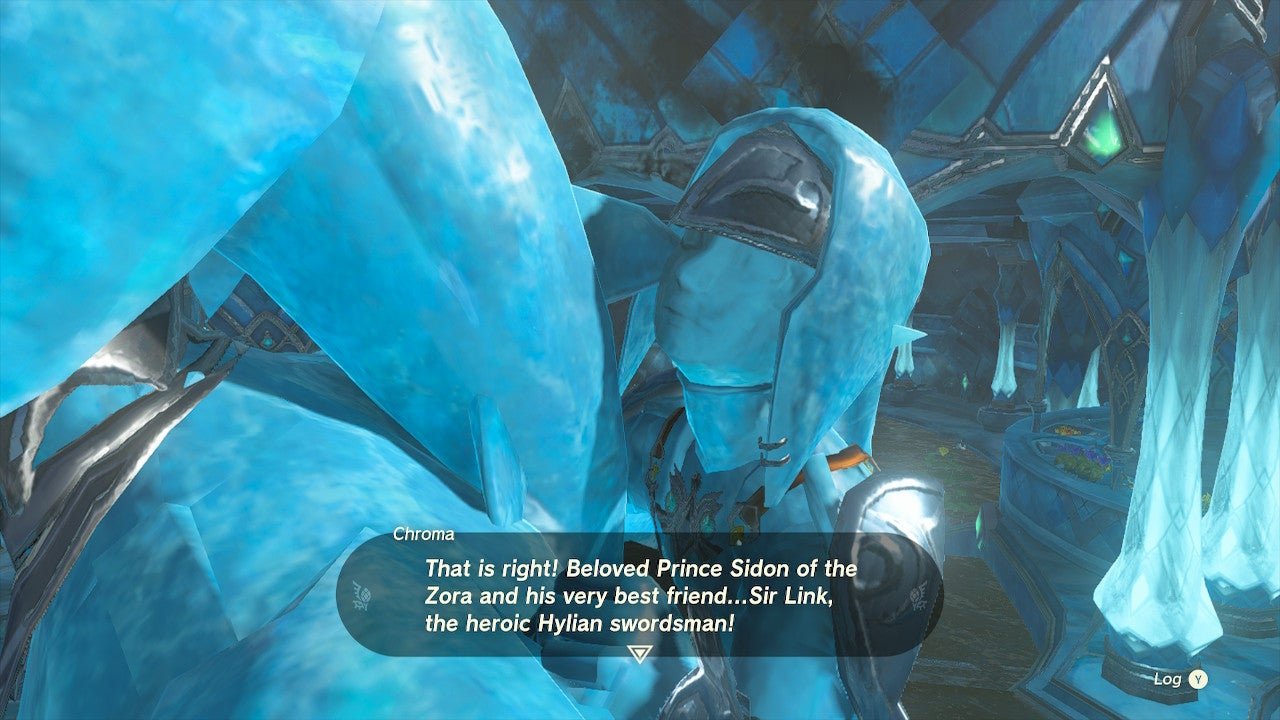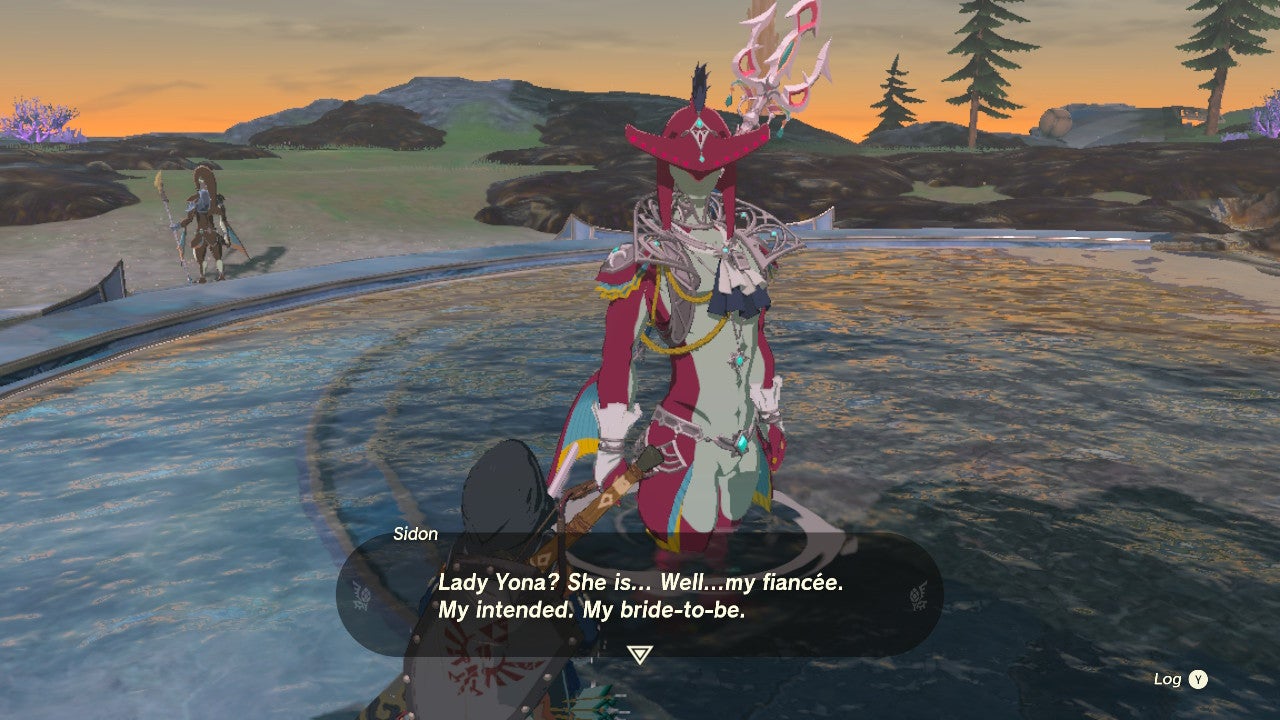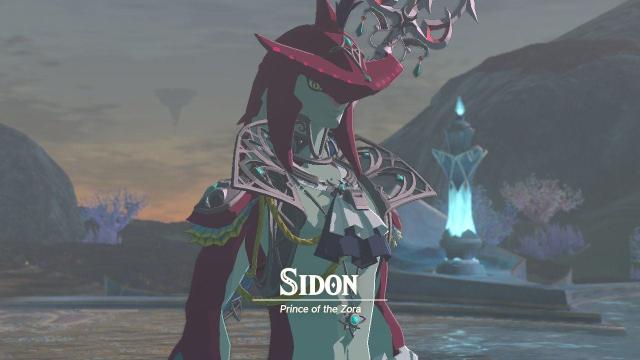When Tears of the Kingdom finally released this past May, reactions were mostly rapturous. People marveled at all the things players could build with Link’s new Ultrahand ability, and delighted in discovering the mysteries lurking in Hyrule’s new regions. However, one aspect did have a number of fans expressing their disappointment online: the introduction of Prince Sidon’s fiancée, Lady Yona.
From reviewers to casual fans, the Internet was ablaze with reactions, to the point that a number of publications ran articles highlighting tweet and TikTok reactions. But why did she elicit such a strong reaction from fans? One reason for the frosty reception to the green Zora is that her presence feels like an intentional heteronormative course-correct on the part of the game’s creators. What does that mean, exactly? To illuminate the situation, let’s look at another character created for just that purpose: Kathy Kane, the original Batwoman.
For the DC uninitiated, Katherine Kane was introduced in Batman comics in 1956. In the 1954 book Seduction of the Innocent, psychiatrist Fredric Wertham claimed that comic books were a root of juvenile delinquency, and called special attention to Batman and Robin, stating they were “like a wish dream of homosexuals living together.” The reaction to the book led to a Senate hearing on the comics industry in April and June of 1954, prompting the industry to create the Comics Code Authority that September. In an effort to prevent any further queer interpretation of Batman and to follow the CCA’s guidelines against hinting at “illicit relationships,” Kathy Kane’s Batwoman was introduced as an appropriate love interest for Batman.
In the original Breath of the Wild, Sidon serves as one of Link’s companions in facing off against the Ganon-controlled Divine Beasts. The younger brother of the slain Champion Lady Mipha, Sidon provides a glimpse into just how much time has passed during Link’s slumber. Aside from being generally handsome, Sidon has an extremely boisterous and friendly personality. Unlike the majority of the other Zora who held a grudge against Link for the death of Lady Mipha, Sidon only ever provides encouragement and praise for our hero.

As one of the few characters who actually remembers the Calamity and experienced loss from it so personally, Sidon’s acceptance and belief in Link was read by some players as both a source of forgiveness for perceived failures and an outlet in which to share and process grief. The game never positioned Sidon as an explicit love interest for Link as it did Mipha and Zelda, but fans latched onto the dynamic between the two, resulting in one of the more popular ships in the fandom.
Now, while it’s highly unlikely that Yona was written solely to mitigate gay subtext between Sidon and Link, the parallels to Batwoman are hard to deny. First of all, it’s important to note Sidon’s popularity amongst fans. Apart from the plethora of fanworks Sidon has inspired, Eiji Aonuma and Hidemaro Fujibayashi were even asked to comment on the fact that many fans find the Zora prince attractive during the Breath of the Wild DLC Dev Talk. As a standout favourite, any love interest for him was bound to ruffle a few feathers.
The game’s writing, however, only serves to exacerbate player frustration with Yona. She’s presented not simply as Sidon’s fiancée, but as a dear childhood friend who is not originally from Zora’s Domain. This in particular has been a sticking point for many. Across Breath of the Wild, Age of Calamity, and their respective DLCs, neither Yona nor her kingdom are ever mentioned, not in written texts like the Domain murals and Mipha’s diary, not in NPC dialogue, not anywhere else. It’s as if she and her kingdom didn’t exist before, which makes her backstory play like an awkward retcon.
Then there’s the characterization of Sidon and Yona’s relationship from in-game text in Tears of the Kingdom. While players see both royals happy in their arrangement, Sidon’s mural entitled “Two Sisters of Different Blood” in Zora’s Domain paints their childhood dynamic as similar to that between Sidon and his sister Mipha. He writes, “As a child, I had two big sisters. One by birth and one by chance.” While the text is attempting to show the growth of their relationship and perform heavy lifting not done in previous games, likening his childhood connection with Yona to the one he had with his sister adds a strange dimension to the relationship. Why establish this framing in both Sidon’s and the players’ minds?
That same text also reveals that the engagement is an arranged one. For a race as long-lived as the Zora, the lack of foreshadowing makes the engagement feel a bit sudden, even with the speculated seven-year time jump between Breath of the Wild and Tears of the Kingdom. This is a character with a canonical in-game fanclub we’re talking about, so the lack of mention of even a speculated future match with a princess from another land is noticeable. These factors all come together to leave many players feeling as if Yona is being awkwardly forced into the existing dynamic, especially when compared to the much more graceful writing of Sidon and Link’s relationship.

Whether players were fans of Sidon himself or shippers of Sidon and Link, even the most passionate fan was never under the illusion they’d get to romance the Zora prince. However, Tears of the Kingdom ups the queer subtext between these two, even as it introduces Yona into the mix. While Mipha’s statue still exists in Zora’s Domain, it’s been replaced at its prominent central location by a statue of Link riding Sidon’s back (ahem) during the Vah Ruta battle from Breath of the Wild.
And although Sidon does have a mural talking about Yona, it’s noticeably short compared to the one dedicated to lavishing praises onto Link. When you complete the Water Temple, Sidon gets down on one knee to present his vow as a sage (which manifests as a literal ring) to Link while holding Link’s hand in his own, mimicking the imagery of a marriage proposal. During Sidon’s coronation, Link and Yona stand equally close to him, and after the coronation Yona tells Link that when Sidon speaks, it’s more than likely to talk about him.
It’s the contrast of all this queer subtext around Link and Sidon against the circumstances and writing of Yona’s introduction that make her presence so jarring for players, and it’s precisely that contrast that has so many players hung up on the sentiment that Yona was introduced to get in the way of Sidon and Link’s relationship. One satirical post that received over 34,000 likes on Twitter presents a fake quote from series producer Eiji Aonuma claiming that Lady Yona was introduced in response to Sidon’s popularity and due to the game’s release just before Pride Month.
The clumsiness with which Yona is introduced is definitely ripe for good-natured mockery, but it’s still frustrating that Nintendo has, perhaps unintentionally, travelled down the path of reinforcing heteronormative tropes. But, then, what would have been a good way to navigate this? You might conclude, based on these reactions, that Sidon should have simply remained single. But the conversation goes beyond just making every character queer or steering away from straight romances. Rather, it’s a question of applying heteronormative expectations formed by the real world to stories of high fantasy.

A common online reaction to disappointment with Sidon’s engagement has been the attitude: Well, what did you expect? Sidon is a prince, of course he was going to get married. This response unknowingly reflects the heteronormativity that resulted in Yona’s introduction feeling haphazard to fans in the first place. Yona’s history with Sidon is situated as having existed since the early events of Breath of the Wild, and there seems to be a tacit belief at work that players will accept the engagement and do the mental work of reconciling it with the lack of setup in the original game.
Sure, Sidon is a prince, but he’s a shark prince of a kingdom of amphibious fish people. The expectation that players should have known his coronation would necessitate his marriage to a female fish-person places real-world heteronormativity firmly in fictional Hyrule. There’s no denying that the Zora royal family pulls its inspiration from real-world monarchies, but the societal and cultural pressures that presume heterosexuality of those royals don’t have to exist in fantasy. That’s before even considering the reality that many real-life royals have had gay paramours of their own. Yet despite that, heteronormativity continues to be perpetuated in these kinds of fantasy properties.
It’s a bit confusing, especially since Nintendo’s high fantasy properties have shown the ability to decenter heteronormativity before. While Fire Emblem: Three Houses had a noticeable lack of gay romanceable options, it had a large array of sapphic S Supports. Even amongst S Supports between NPCs, Three Houses presented plenty of queer subtext, most notably between Felix and Sylvain “[passing] away on the same day, as if conceding that one could not live without the other.” Nintendo is fully capable of fleshing out relationships between NPCs even where the player does not have an active stake in that relationship, which only highlights for fans the suddenness and narrative clumsiness of Sidon and Yona’s engagement.
For better or for worse, fan reactions to Yona are showing that especially in fantasy, it’s not enough for creators to expect their audiences to presuppose heterosexuality. Rather, it seems there’s a new expectation for romances to be actively worked towards, even if they aren’t the focal point of a story.

Leave a Reply